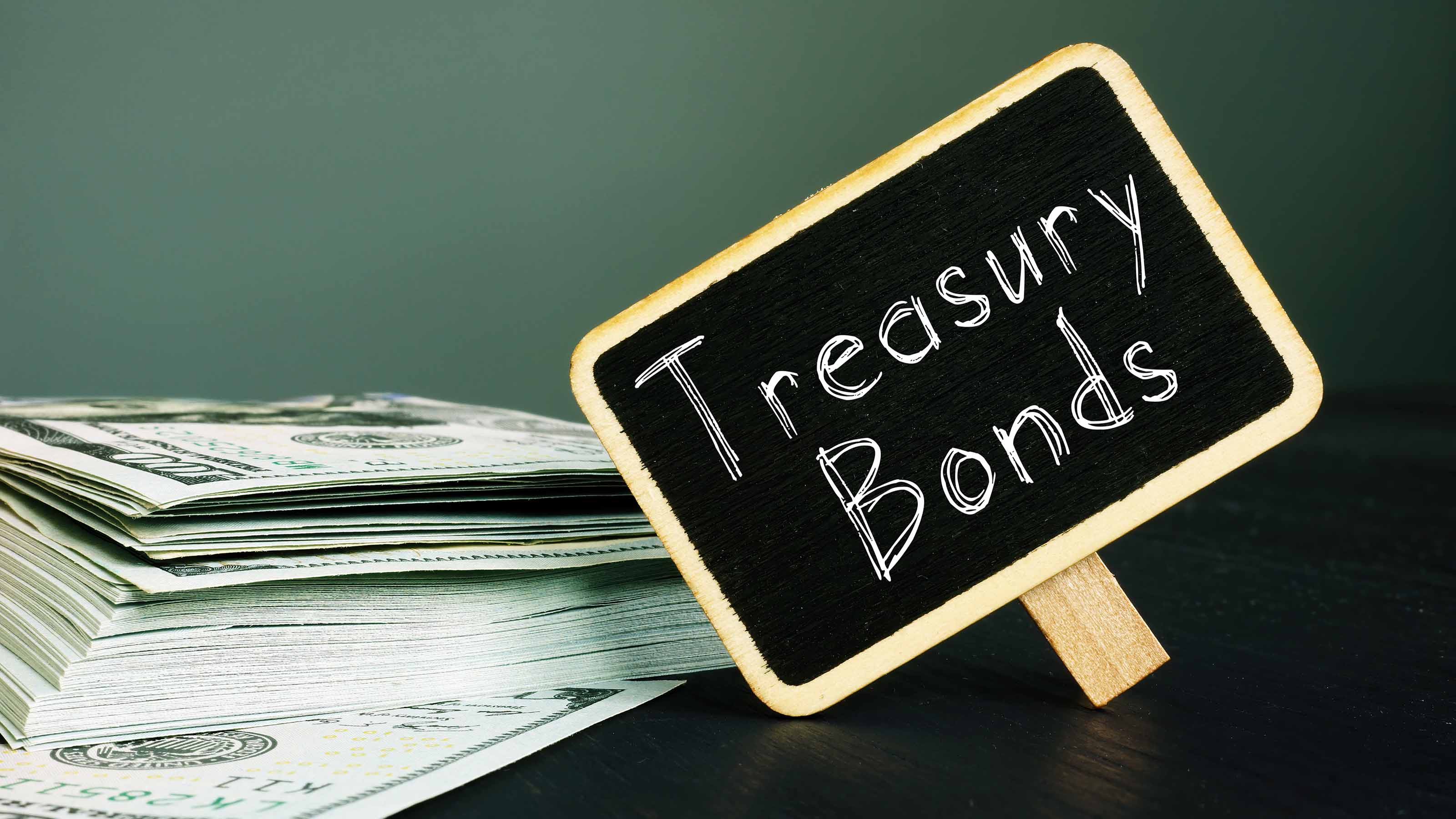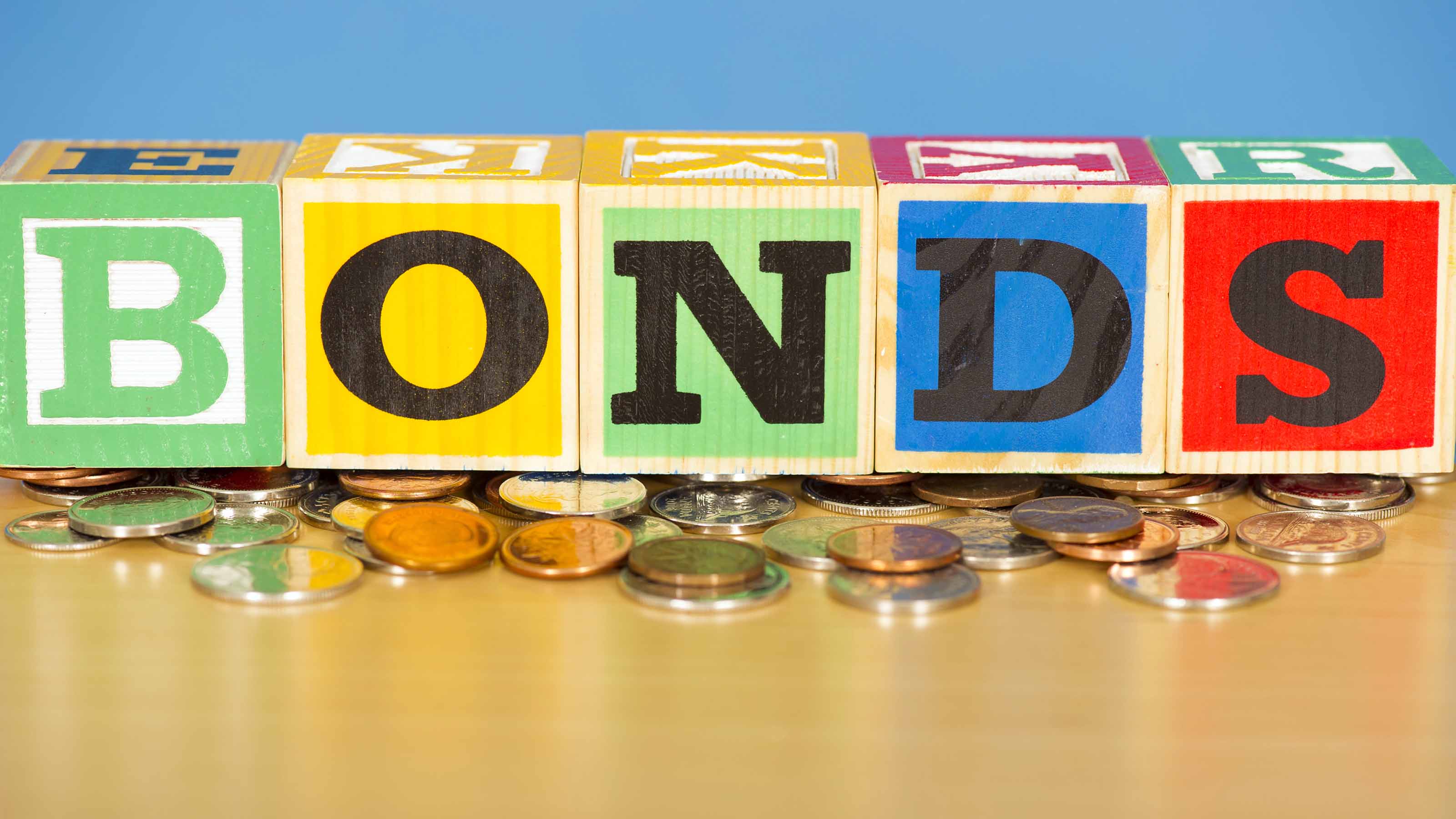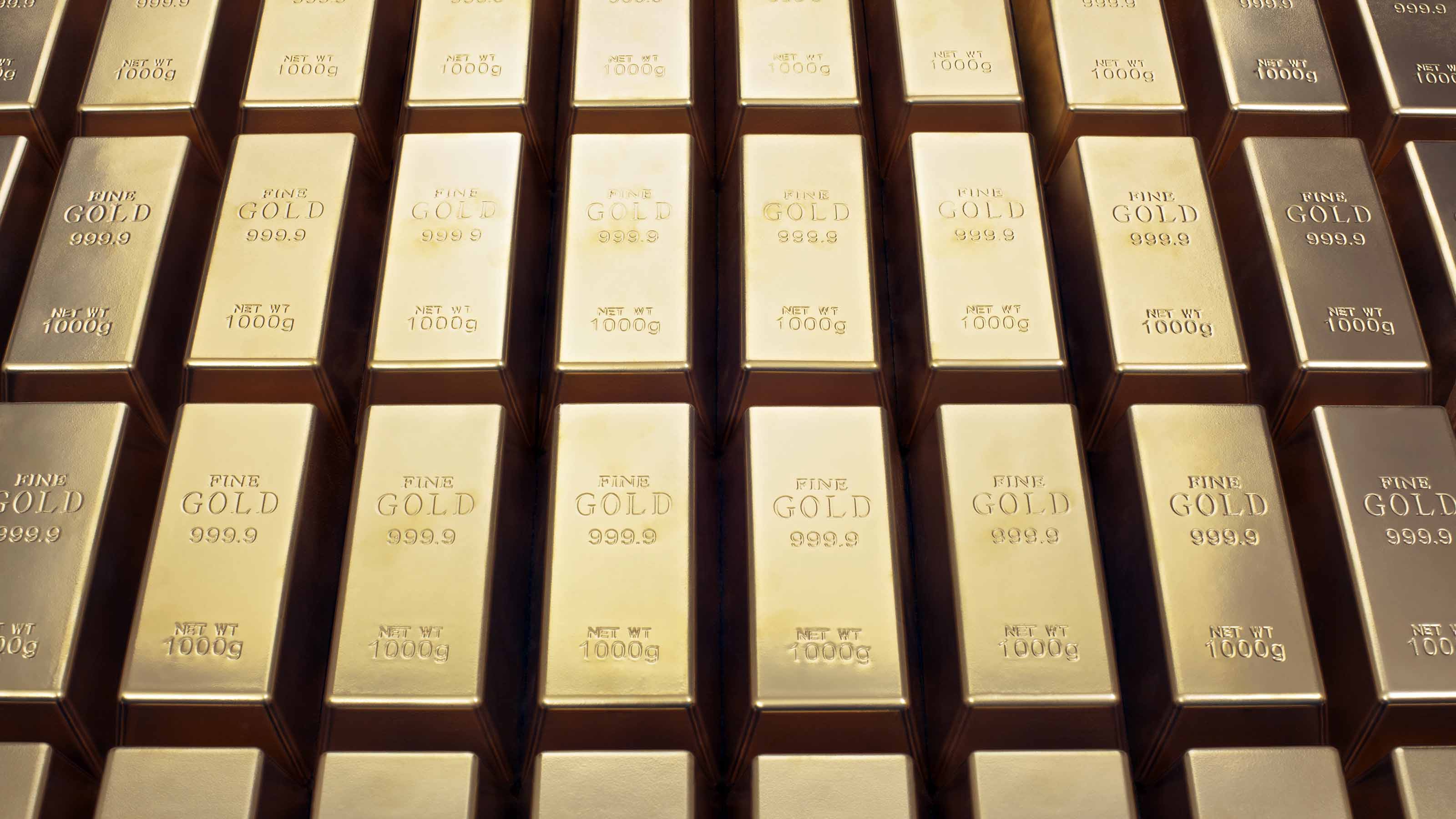The 12 Best Bear Market ETFs to Buy Now
Investors who are fearful about the more uncertainty in the new year can find plenty of protection among these bear market ETFs.


Investors worried that the current bear market will get worse again before turning into a bull market can find plenty of protection among exchange-traded funds (ETFs). In fact, these bear market ETFs might very well be your best bet.
Individual stocks can carry a lot of risk, especially in a downturn. You could diversify via mutual funds, but they don't have much breadth of tactical options. But if you browse through some of the best bear market ETFs geared toward staving off downturn, you're sure to find a bounty of options that mesh well with your investing style and risk profile.
And make no mistake: Many analysts and strategists are calling for a continuation of the bear market – and more economic tumult – in 2023.
"The Federal Reserve remains committed to taming inflation by keeping monetary policy tight, as Jerome Powell emphasized in his press conference, which is not great news for the stock market and supports the bear market continuing into 2023," says James Demmert, chief investment officer of Main Street Research. "The Fed is trying to engineer a soft economic landing that in our view has a high likelihood of failing and causing a recession in 2023. … Stock indexes are vulnerable at current levels."
Thing is, no two bear markets are the same. Yes, certain sectors historically perform better than others – and we would recommend being in a couple of those sectors (more on that in a moment). But you'd be surprised; certain cyclical always seem to keep up with, or outright beat, purely defensive plays. Energy, for instance, is the best sector of this current bear market by a country mile, up 52% on a total-return basis (price plus dividends) vs. an 18% decline for the S&P 500. Communication services and technology were among the top performers in the COVID bear market. Energy and consumer discretionary stocks were among the top four sectors during the Great Recession.
In short, there's no guaranteed hedge against a bear market. If there was, everyone would invest in it. But you can learn about what options are available to you so you can make the best decision for whatever environment you face. Some ETFs tend to work well in many bear markets, while others need specific conditions to thrive.
With all that said, here are a dozen of the best bear market ETFs. These funds span a number of tactics, from low-volatility stocks to bonds to commodities and more, and most have already outperformed in the current bear market.
Data is as of July 12. Dividend yields represent the trailing 12-month yield, which is a standard measure for equity funds.

Invesco S&P 500 Low Volatility ETF
- Type: Low-volatility stock
- Assets under management: $10.5 billion
- Dividend yield: 2.1%
- Expenses: 0.25%
One of the most popular types of funds for a bear market is low-volatility ETFs. The objective is pretty straightforward: Invest in stocks with low volatility, which should limit downside during a down market.
The Invesco S&P 500 Low Volatility ETF (SPLV, $63.61) is a pretty straightforward fund that tracks the S&P 500 Low Volatility Index, which is composed of the 100 S&P 500 components with the lowest realized volatility over the past 12 months. It then assigns weights to each stock based on its volatility (well, lack thereof).
One popular way to measure volatility is called "beta," which tracks a security's volatility compared to some benchmark. The benchmark here is the S&P 500, and the benchmark will always have a beta of 1. SPLV has a beta of 0.74, which implies the fund is roughly 26% less volatile than the broader market.
This doesn't guarantee SPLV will outperform during a market shock. In fact, during the quick COVID bear market, this low-volatility ETF underperformed the S&P 500 by 2 percentage points.
But Invesco's ETF does tend to do pretty well during longer periods of tumult. Take June 2015 to June 2016, when the market's roller-coaster movement generated a marginally negative return; SPLV was up by nearly 9%. And during the current bear market, the fund has been a relative champ, down less than 5% on a total-return basis (price plus dividends) vs. the S&P 500's 18% drop.
The portfolio is bound to change over time depending on which parts of the market are more volatile than others, but for now, it's unsurprisingly heavy in utility stocks (26%) and consumer staples (22%) – two defensive, high-yielding sectors.
Top individual holdings include consumer staples giants Coca-Cola (KO) and PepsiCo (PEP), and New York utility Consolidated Edison (ED).

Franklin Low Volatility High Dividend ETF
- Type: Low-volatility dividend stock
- Assets under management: $945.0 million
- Dividend yield: 3.1%
- Expenses: 0.27%
The Franklin Low Volatility High Dividend ETF (LVHD, $38.12) has roughly the same thrust as SPLV, but with an added focus on dividends. The ETF invests in roughly 50 to 100 stocks selected because of their lower volatility, as well as their ability to generate income.
LVHD starts with a universe of the 3,000 largest U.S. stocks, which, given a universe that large, includes mid- and small-cap stocks, too. It then screens for profitable companies that can pay "relatively high sustainable dividend yields." It then scores those best dividend stocks higher or lower based on price and earnings volatility. Every quarter, when the fund rebalances, no stock can account for more than 2.5% of the fund, and no sector can account for more than 25%, except real estate investment trusts (REITs), which are capped at 15%.
Right now, LVHD's top three sectors are the the ones many investors think of when they think of defense: utilities (23%), consumer staples (23%) and real estate (11%). They're represented by top holdings such as Duke Energy (DUK), Pfizer (PFE) and Medical Properties Trust (MPW).
This Legg Mason ETF's dual foci of income and low volatility should make it one of the best bear market ETFs – indeed, on a total-return basis, it is down by just 2%.
Just be aware that LVHD historically tends to get left behind once the bulls pick up speed.
Note: LVHD used to be the Legg Mason Low Volatility High Dividend ETF, but the name was changed in 2021 following the closing of Franklin Templeton’s acquisition of Legg Mason.
Learn more about LVHD at the Franklin Templeton provider site.

iShares Core High Dividend ETF
- Type: Dividend stock
- Assets under management: $12.3 billion
- Dividend yield: 3.4%
- Expenses: 0.08%
Low-volatility dividend stocks might be what the doctor ordered, but investors have done well in this bear market by holding dividend stocks period.
Consider the performance of the iShares Core High Dividend ETF (HDV, $102.41), which has generated a 6% gain in this current bear market.
This iShares ETF is an inexpensive, straightforward way to gain access to a bundle of high-yielding dividend stocks. HDV currently holds 75 stocks that have been able to sustain above-average payouts and have also passed several financial-health screens.
It's also a somewhat different portfolio than the low-volatility ETFs above. Energy stocks such as Exxon Mobil (XOM) and Chevron (CVX) make up more than a quarter of HDV's assets – and helps explain its outperformance in 2022. Healthcare stocks such as AbbVie (ABBV) and Pfizer are also a considerable weight, at 22%. Tech and staples enjoy double-digit weights as well.
In general, this is just a big batch of dividend-paying blue chips, which explains its 3.4% dividend yield – more than twice what you'd get from a vanilla S&P 500 ETF.
We will mention that the heavy oil and gas exposure, which has worked heavily in HDV's favor in 2022, could be a hindrance if there's significant relief in energy prices during 2023. Still, this remains one of the best bear market ETFs.

Vanguard Health Care ETF
- Type: Sector (Healthcare)
- Assets under management: $17.2 billion
- Dividend yield: 1.2%
- Expenses: 0.10%
Only two sectors have put up aggregate positive returns across all bear markets since 1990, and investors should look to ETFs covering those sectors should they smell trouble in the future.
The best sector in bear markets? Healthcare stocks – a completely unsurprising fact if you've been alive long enough to pay for medicine and hospital visits over the past three decades. Consider that health expenditures between 2000 and 2020 alone have tripled, to about $4.1 trillion from $1.4 trillion, far outpacing the pace of inflation.
Those costs rise in good times and bad alike. And, to be blunt, consumers really have no choice. When the economy tanks, you can put off buying a new smartphone or remodeling your kitchen, but you can't stop filling your prescriptions and going to the doctor.
The Vanguard Health Care ETF (VHT, $246.62) is one of the least expensive ways to invest in this recession-proof sector, at just 10 basis points in annual expenses. (A basis point is one one-hundredth of a percentage point.) It's also one of the most diversified, at a massive 420 stocks.
VHT is a market cap-weighted fund, which means the larger the stock, the larger the percentage of assets are committed to holding that stock. Thus, mega- and large-cap stocks still have the biggest say on performance, at nearly 80% of the fund's weight. But you do enjoy some mid- and even small-cap exposure, meaning you can benefit from explosive smaller biotech and biopharma names that are likelier to pop on drug trials and buyouts.
Holdings include insurers such as UnitedHealth Group (UNH), Big Pharma names like Johnson & Johnson (JNJ) and Eli Lilly (LLY), and medical equipment companies like Thermo Fisher Scientific (TMO).

Consumer Staples Select Sector SPDR Fund
- Type: Sector (Consumer staples)
- Assets under management: $17.5 billion
- Dividend yield: 2.4%
- Expenses: 0.10%
The next selection on this list of best bear market ETFs covers another area you can't skimp on, regardless of whatever the economy is doing: food and basic hygiene products.
That's what consumer staples are: the staples of everyday life. Some are what you'd think (bread, milk, toilet paper, toothbrushes), but staples also can include products such as tobacco and alcohol – which people treat like needs, even if they're not.
Like utilities, consumer staples tend to have fairly predictable revenues, and they pay decent dividends. The Consumer Staples Select Sector SPDR Fund (XLP, $74.86) invests in the 30-plus consumer staples stocks of the S&P 500 – a who's who of the household brands you've grown up with and know. Like VHT, XLP is market cap-weighted, which results in huge holdings in names such as Procter & Gamble (PG, 15% weight), which makes Bounty paper towels, Charmin toilet paper and Dawn dish soap. PepsiCo and Coca-Cola are also double-digit weightings.
XLP also holds a few retail outfits, such as Costco (COST) and Walmart (WMT), where people typically go to purchase these goods.
The Consumer Staples SPDR has long been among the top ETFs to buy, from a sector standpoint, during corrections and bear markets. For instance, during 2007-09, while the S&P 500 was shedding more than 55%, the XLP only lost half as much, -28.5%. In 2015, the XLP outperformed the index 7% to 1.3%. And during this bear market, the fund has a 17-percentage-point edge over the broader market.
An above-average yield of 2.4% is partly responsible for that outperformance.

Schwab Short-Term US Treasury ETF
- Type: Short-term bond
- Assets under management: $10.1 billion
- SEC yield: 4.5%*
- Expenses: 0.03%
In many market selloffs, investors can be found fleeing into the relative safety of bonds. Sure, bonds' all-time returns don't come close to stocks, but they're typically more stable. And in a volatile market, investors cherish knowing their money will be returned with a little interest on top.
Thing is, when the stock market is getting shelled in large part because interest rates are going up (and, conversely, bond prices are going down), bonds aren't much of a safe haven.
Bond investors have learned this the hard way in 2022, with the Agg bond index off by 10% – not much of a decline in the stock world, but a nasty spill for fixed income. But with the Fed at least signaling a slowing in rate hikes and coming closer to its "terminal rate," some bonds could spell opportunity in 2023.
"We remain cautious on longer-term U.S. Treasuries in the coming months as persistently high inflation will likely lead to further volatility as investors demand a higher-term premium," says Comerica Wealth Management. "We believe shorter- dated U.S. Treasuries, however, are closer to pricing in a peak for policy rates and offer relatively attractive income opportunities."
The Schwab Short-Term US Treasury ETF (SCHO, $48.40) is the cheapest way to invest in short-term Treasuries. At just 3 basis points, you gain access to nearly 100 different U.S. bonds with maturities of between one and three years.
Remember: Short-term bonds in general are considered safer and more stable than longer-dated bonds because the less time a bond has remaining before it matures, the likelier it will be repaid. Moreover, Treasuries are considered some of the safest debt on the planet – shorter-dated ones doubly so.
The downside is that these bonds tend not to yield as much as their longer-dated compatriots, but rising rates have resulted in some decent income from even the shortest-term of bonds. To wit, the SCHO has a whopping 4.5% SEC yield at present.
Just remember: Stability works both ways. SCHO doesn't move much, in bull and bear markets – it's off just 3% in the current bear market. This ETF is merely a place to duck for cover and earn a decent bit of interest while you wait for bluer skies.
Learn more about SCHO at the Schwab provider site.
* SEC yield reflects the interest earned for the most recent 30-day period after deducting fund expenses. SEC yield is a standard measure for bond funds.

FlexShares Credit-Scored US Corporate Bond Index Fund
- Type: Investment-grade bond
- Assets under management: $239.2 million
- SEC yield: 5.2%
- Expenses: 0.22%
Short-term Treasuries aren’t the only area of the bond market Comerica Wealth Management is favorable on for 2023.
"Our fixed income positioning favors quality, with investment-grade corporate bonds offering a combination of relative valuation and income," Comerica says. "The current volatility in bond yields leads us to take interest-rate risk on corporate credit over government bonds, as these securities offer quality ratings and strong balance sheets."
While there are cheaper vanilla investment-grade bond ETFs out there, the FlexShares Credit-Scored US Corporate Bond Index Fund (SKOR, $47.00) stands out for its focus on quality.
SKOR examines traits such as valuation, management efficiency, profitability and solvency when determining which issuers to target. It then has various controls, such as maximum single-security overweights and underweights, 3% issuer maximum, even a turnover constraint that keeps the fund from trading too much.
The result is a portfolio of roughly 760 investment-grade holdings, 37% of which are rated A or better. The average maturity of the portfolio is a hair over six years. And the duration is 4.2 years. (Duration is a measure of risk; SKOR's duration implies that a 1% increase in interest rates should result in a 4.2% decrease in the fund's price; a 1% decrease in rates should result in a 4.2% improvement.)
SKOR also enjoys a five-star rating from Morningstar, reflecting its excellent past performance – it's in the top 91%, 95% and 89% of category funds over the trailing one, three and five years, respectively. It also enjoys a Gold medal rating; Morningstar's medal ratings are a machine-learning statistical model that determines what the fund would receive if a Morningstar analyst covered the fund.
BlackRock writes that "investment-grade corporate bonds offer more income than the highest-paying dividend stocks [at present]," and SKOR certainly reflects that. At an SEC yield of more than 5%, you’re getting several times more income than the S&P 500 and at least 1 percentage point more annual yield than most high-yield dividend ETFs.

GraniteShares Gold Trust
- Type: Commodity (Gold)
- Assets under management: $882.5 million
- Dividend yield: N/A
- Expenses: 0.1749%
Commodities are another popular flight-to-safety play, though perhaps no physical metal is more well-thought-of during a panic than gold.
A lot of that is a fear of a horrible-case scenario: If the world's economies collapse and paper money means nothing, humans need something to use for transactions, and many believe that something will be the shiny yellow element that we used as currency for thousands of years.
Of course, at that point, your IRA will be the least of your worries.
But there is a case for gold as a hedge. It's an "uncorrelated" asset, which means it doesn't move perfectly with or against the stock market. It's also a hedge against inflation, often going up when central banks unleash easy-money policies. Because gold itself is priced in dollars, weakness in the U.S. dollar can make it worth more. So sometimes, it pays to have a small allocation to gold.
You could buy physical gold. You could find someone selling gold bars or coins. You could pay to have them delivered. You could find somewhere to store them. You could insure them. And when it's time to exit your investment, you could go to the trouble of finding a buyer of all your physical loot.
If that sounds exhausting, consider one of the many funds that trade based on the worth of actual gold stored in vaults.
The GraniteShares Gold Trust (BAR, $17.75) is one of the best bear market ETFs for this purpose. Each ETF unit represents 1/100th of an ounce of gold. And with a 0.1749% expense ratio, it's the second-cheapest ETF that's backed by physical gold. Traders also like BAR because of its low spread, and its investment team is easier to access than those at large providers.

Innovator U.S. Equity Power Buffer ETF - January
- Type: Buffered
- Assets under management: $392.7 million
- Dividend yield: 0.0%
- Expenses: 0.79%
A rising fund type of the past few years has been "buffered ETFs" or "defined outcome ETFs." While they differ from provider to provider, they tend to invest in some sort of broad market index, such as the S&P 500, but then trade call and put options to limit the amount of downside they can experience. The flip side? There's also a maximum amount of upside they can experience.
Put more simply: They limit your downside, but also your upside.
Also, many, like the Innovator ETFs, are for specific 12-month periods, with each fund designed to be invested in starting during a certain month.
The Innovator U.S. Equity Power Buffer ETF - January (PJAN, $31.59), for instance, tries to track the return of the SPDR S&P 500 ETF Trust (SPY), up to a predetermined cap, while protecting investors against the first 15% of losses over the outcome period, which is basically the next year. So in the case of PJAN, the outcome period would start Jan. 1, 2023, and end at 2023's close, then reset in 2024. (And yes, the outcome period for 2022 is about to come to a close.)
PJAN is absolutely doing its job in 2022, declining just 5% versus the S&P 500's 18%.
The two major risks to watch out for with PJAN are a rip-roaring bull run or a monster decline. In the first scenario, PJAN's upside would be capped; in the second, PJAN would indeed protect you from 15% of that downside, but you would suffer anything on top of that. In a 40% downturn, you'd still lose 25%; other bear market ETFs might perform better.

ProShares Short S&P500 ETF
- Type: Inverse stock
- Assets under management: $2.9 billion
- Dividend yield: 0.0%
- Expenses: 0.89%
Many of the best bear market ETFs we've talked about so far seem likely to lose less than the market during a downturn, and some might even generate positive returns.
But the ProShares Short S&P500 ETF (SH, $16.01) is effectively guaranteed to do well if the market crashes and burns.
The ProShares Short S&P500 ETF is a complex machine of swaps and other derivatives (financial instruments that reflect the value of underlying assets) that produces the inverse daily return (minus fees) of the S&P 500 Index. Or, put simply, if the S&P 500 goes up 1%, SH will go down 1%, and vice versa. If you look at the chart of this ETF versus the index, you'll see a virtual mirror image.
This is one of the simplest market hedges you'll find.
Chances are you own a lot of stocks you believe in for the long term, and if you've held them a while, you're probably sitting on some great dividend yields on your original purchase price. Now, if you think the market will keep going south for a prolonged period of time, you could dump those stocks, lose your attractive yield on cost, pay taxes on your capital gains, and hope to time the market right and buy back in at a lower cost.
Or … you could just hang on to those stocks, buy some SH to offset some short-term losses in your portfolio, then sell it when you think the recovery is about to get under way.
There's a very clear risk, of course: If the market goes up, SH will nullify some of your gains.
Yes, there are much more aggressive "leveraged" inverse ETFs that provide double or even triple this kind of exposure, whether it's to the S&P 500, market sectors or even specific industries. But those are far too risky for buy-and-hold investors. On the other hand, a small hedging position in SH is manageable and won't crack your portfolio wide open if stocks manage to fend off the bears.

AdvisorShares Ranger Equity Bear ETF
- Type: Inverse stock
- Assets under management: $151.8 million
- Dividend yield: 0.0%
- Expenses: 4.29%
Another way to peel this particular banana is an actively managed short-selling fund that has been around for a little more than a decade.
The AdvisorShares Ranger Equity Bear ETF (HDGE, $28.59), which hit the market in 2011, relies on fundamental research to determine which stocks it should bet against.
Managers John Del Vecchio and Brad Lamensdorf attempt to identify companies with "low earnings quality or aggressive accounting which may be intended on the part of company management to mask operational deterioration and bolster the reported earnings per share over a short time period." They also try to identify shorter-term downward catalysts, such as a company missing earnings expectations or reducing its financial forecasts.
Because the managers operate on a stock-by-stock basis, the makeup will change over time. Right now, the pair are most bearish on small caps (46%), then mid-caps (36%), and the rest of their positions are in large caps (18%). From a sector perspective, they're most bearish on technology stocks (39%). At the moment, CarMax (KMX) and Coinbase Global (COIN).
In 2022, HDGE has been the real deal, delivering a 16% gain for its pessimistic shareholders. And that’s after factoring in considerable expenses north of 4%.

Cambria Tail Risk ETF
- Type: Options
- Assets under management: $279.3 million
- Dividend yield: 1.2%
- Expenses: 0.59%
There are bear markets, and then there are rapid, chaotic descents into a sea of red.
Cambria Tail Risk ETF (TAIL, $15.79) is designed for the latter.
This fund invests in a portfolio of primarily intermediate-term U.S. Treasuries, but also out-of-the-money put options (puts that have not yet reached their strike price) on the U.S. stock market. The latter is where the fund gets its oomph – if the stock market heads precipitously lower, TAIL's options will spike.
But in all other conditions – not just rising markets, but even a slowly developing bear market – TAIL isn't going to do much for you. Cambria even warns right up front on its fund page that because "the fund is designed to be a hedge against market declines and rising volatility, Cambria expects the fund to produce negative returns in the most years with rising markets or declining volatility."
Here are three examples to help illustrate the point:
- In late 2018, amid a burgeoning trade war between the U.S. and China, the stock market quickly plunged into a near-bear market, declining 19% in about three months. TAIL jumped 24% in that time.
- In a little more than a month – between Feb. 19 and March 23 of 2020 – COVID fears sent the S&P 500 lower by almost 34%. Cambria's ETF soared by 28%.
- 2022's bear market started on Jan. 3 but didn't hit its (for now) bottom until Oct. 12 – a roughly 25% decline on a price basis. On the same basis, the market is off about 20% as of late December. The Cambria Tail Risk ETF is off 10%, which is still better than the market, but clearly this isn’t an optimal environment for its strategy.
In short, TAIL is only suitable for the most dour of outlooks. If you’re expecting the market to decline in a more orderly fashion, one of the other bear market ETFs above will be more your speed.
Profit and prosper with the best of Kiplinger's advice on investing, taxes, retirement, personal finance and much more. Delivered daily. Enter your email in the box and click Sign Me Up.
Kyle Woodley is the Editor-in-Chief of WealthUp, a site dedicated to improving the personal finances and financial literacy of people of all ages. He also writes the weekly The Weekend Tea newsletter, which covers both news and analysis about spending, saving, investing, the economy and more.
Kyle was previously the Senior Investing Editor for Kiplinger.com, and the Managing Editor for InvestorPlace.com before that. His work has appeared in several outlets, including Yahoo! Finance, MSN Money, Barchart, The Globe & Mail and the Nasdaq. He also has appeared as a guest on Fox Business Network and Money Radio, among other shows and podcasts, and he has been quoted in several outlets, including MarketWatch, Vice and Univision. He is a proud graduate of The Ohio State University, where he earned a BA in journalism.
You can check out his thoughts on the markets (and more) at @KyleWoodley.
-
 The Rule of Compounding: Why Time Is an Investor's Best Friend
The Rule of Compounding: Why Time Is an Investor's Best FriendDescribed as both a "miracle" and a "wonder," compound interest is simply a function of time.
-
 4 Great Tools to DIY Your Own Financial Plan
4 Great Tools to DIY Your Own Financial PlanSmart Savings Several tools picked out by Kiplinger that DIYers can use to make their own financial plan.
-
 The 7-Month Deadline That Sets Your Lifetime Medicare Premiums
The 7-Month Deadline That Sets Your Lifetime Medicare PremiumsUnderstanding Medicare enrollment is crucial, as missing deadlines can lead to permanent late enrollment penalties and gaps in coverage.
-
 Stocks Chop as the Unemployment Rate Jumps: Stock Market Today
Stocks Chop as the Unemployment Rate Jumps: Stock Market TodayNovember job growth was stronger than expected, but sharp losses in October and a rising unemployment rate are worrying market participants.
-
 The Delayed November Jobs Report Is Out. Here's What It Means for the Fed and Rate Cuts
The Delayed November Jobs Report Is Out. Here's What It Means for the Fed and Rate CutsThe November jobs report came in higher than expected, although it still shows plenty of signs of weakness in the labor market.
-
 Stocks Struggle Ahead of November Jobs Report: Stock Market Today
Stocks Struggle Ahead of November Jobs Report: Stock Market TodayOracle and Broadcom continued to fall, while market participants looked ahead to Tuesday's jobs report.
-
 AI Stocks Lead Nasdaq's 398-Point Nosedive: Stock Market Today
AI Stocks Lead Nasdaq's 398-Point Nosedive: Stock Market TodayThe major stock market indexes do not yet reflect the bullish tendencies of sector rotation and broadening participation.
-
 Dow Adds 646 Points, Hits New Highs: Stock Market Today
Dow Adds 646 Points, Hits New Highs: Stock Market TodayIt was "boom" for the Dow but "bust" for the Nasdaq following a December Fed meeting that was less hawkish than expected.
-
 Dow Rises 497 Points on December Rate Cut: Stock Market Today
Dow Rises 497 Points on December Rate Cut: Stock Market TodayThe basic questions for market participants and policymakers remain the same after a widely expected Fed rate cut.
-
 JPMorgan's Drop Drags on the Dow: Stock Market Today
JPMorgan's Drop Drags on the Dow: Stock Market TodaySmall-cap stocks outperformed Tuesday on expectations that the Fed will cut interest rates on Wednesday.
-
 Stocks Slip to Start Fed Week: Stock Market Today
Stocks Slip to Start Fed Week: Stock Market TodayWhile a rate cut is widely expected this week, uncertainty is building around the Fed's future plans for monetary policy.

